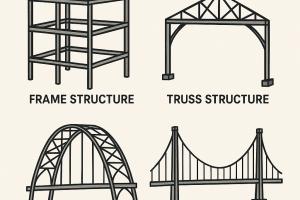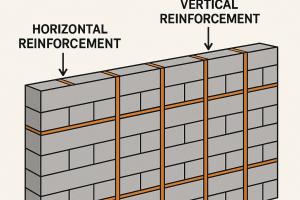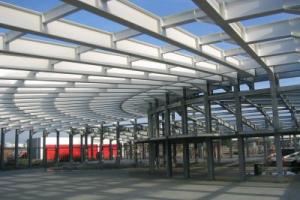Design of Steel Beam - Design Principles and Considerations
Steel beams are essential structural elements widely used in various construction projects, from residential buildings to bridges and industrial facilities. Their robustness, versatility, and high strength-to-weight ratio make them a popular choice for supporting heavy loads and spanning long distances.
Design Principles and Considerations in Designing Steel Beams.
1. Structural Analysis:
The first step in designing steel beams is to perform a comprehensive structural analysis. This involves determining the loads that the beam will experience, such as dead loads (permanent weights), live loads (occupancy and environmental loads), and other applicable loads like wind or seismic forces. The analysis helps engineers understand the forces acting on the beam and the resulting internal stresses.
2. Material Selection:
The choice of steel material is crucial in beam design. Commonly used structural steels include carbon steel (ASTM A36), high-strength low-alloy (HSLA) steels, and heat-treated carbon steels. The selection depends on factors like the required strength, ductility, and resistance to corrosion or fire. The material's mechanical properties, such as yield strength, ultimate strength, and elasticity, are key considerations in determining beam dimensions.
3. Cross-Sectional Shape:
Steel beams come in various cross-sectional shapes, such as I-beams (also known as W-beams or wide flange beams), H-beams, C-beams, and tubular sections. The choice of shape depends on factors like the span length, load requirements, and architectural considerations. The cross-sectional shape determines the moment of inertia and section modulus, which play a vital role in beam strength and stiffness.
4. Limit States Design:
Designing steel beams involves considering different limit states, including strength, serviceability, and stability. Strength limit states ensure that the beam can resist applied loads without experiencing failure. Serviceability limit states focus on criteria such as deflection, vibration, and durability to ensure the beam performs satisfactorily under service conditions. Stability considerations prevent buckling or lateral-torsional instability.
5. Beam Sizing and Design Loads:
Using structural analysis results, engineers determine the appropriate dimensions of the beam, including depth, flange width, and web thickness. These dimensions are selected to satisfy both strength and serviceability requirements. The design loads are then applied to the beam, including factored loads derived from load combinations specified by building codes or project specifications.
6. Flexural Design:
One of the critical aspects of beam design is ensuring adequate resistance to bending or flexure. The design process involves calculating the maximum bending moment and shear forces at different sections along the beam. Engineers determine the required moment of inertia and section modulus to satisfy strength requirements, considering both positive and negative bending moments.
7. Shear Design:
Shear forces are another important consideration in beam design. Steel beams may experience shear forces due to applied loads, which can cause shear failure if not properly accounted for. Design provisions include determining the maximum shear force and selecting an appropriate beam shape and size to resist shear stresses within the acceptable limits.
8. Connection Design:
Designing connections between steel beams and other structural elements is crucial for ensuring overall structural integrity. Connection design involves determining the type of connection, such as bolted or welded connections, and calculating the required connection strength based on applied loads. Proper detailing and consideration of factors like load transfer and rotational capacity are essential for robust connections.
Designing steel beams involves a systematic approach that considers various factors such as structural analysis, material selection, cross-sectional shape, limit states, and appropriate sizing and design of flexural, shear, and connection elements. By following these principles and considerations, engineers can ensure the safe and efficient performance of steel beams in a wide range of construction





